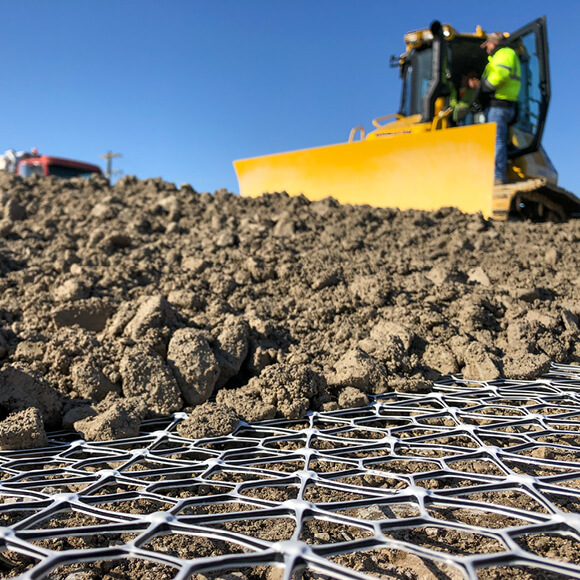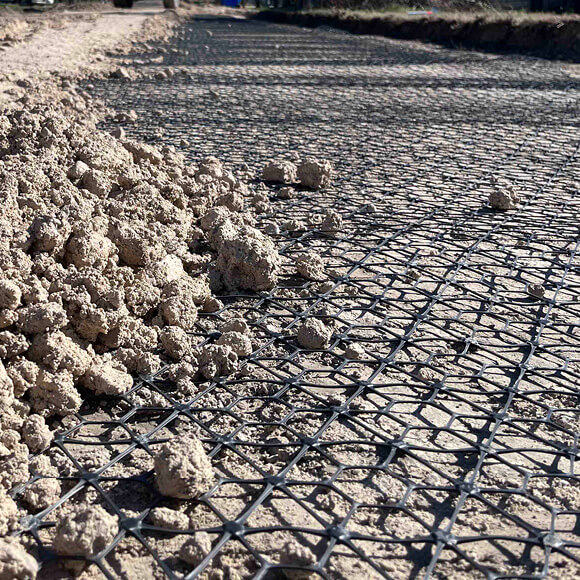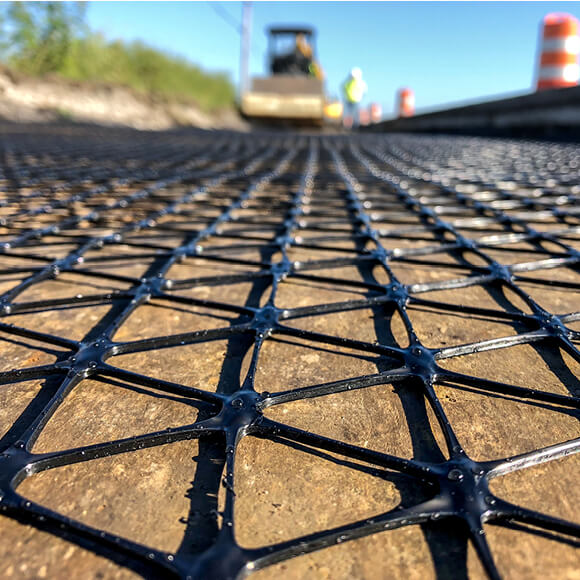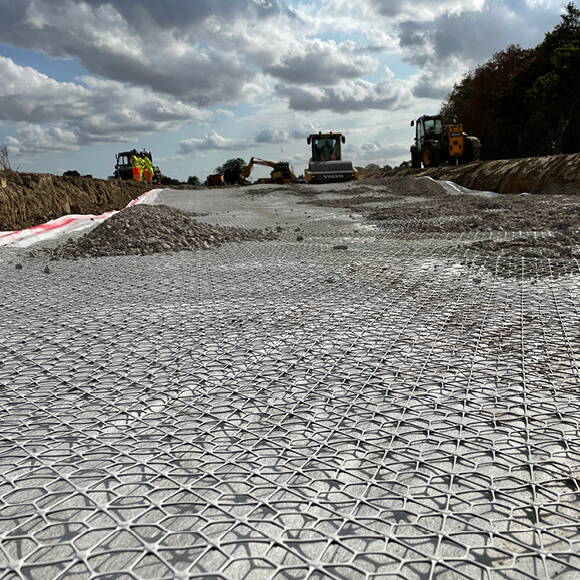.jpg)
Understanding Subgrade and Ground Stabilisation
Solve your soft soil problems
Subgrade stabilisation is the use of geosynthetic reinforcement elements, such as geogrids, to provide constructability and access over weak soil. This creates a solid base for building structures or roads above it, ensuring they stay strong and steady. Working on weak or variable ground usually presents considerable construction challenges. But Tensar’s technology and expertise in subgrade stabilisation not only improves performance but is proven to reduce costs and the environmental impact of subgrade improvement too. Working on weak or variable ground usually presents considerable construction challenges. Tensar's cutting-edge geogrid solutions, including Tensar Interax Geogrids, Tensar HX Geogrid, and Triax TX Geogrid, offer effective subgrade stabilisation.
There are various methods to address weak subgrades. Traditional techniques include compaction, which can be time-consuming and require specialised equipment to achieve optimal results. Chemical treatments with cement or lime are another option, but they can be costly and may have environmental concerns depending on the chemicals used.
The Tensar approach is to construct a mechanically stabilised layer, also known as a subgrade improvement layer, to protect the subgrade during construction and improve bearing capacity to support the structure above. Compared to traditional capping layer or subbase designs, the Tensar subgrade stabilisation solution can reduce aggregate volumes by up to 50%. This can prevent potholes from forming.
Need a Tensar design for your subgrade stabilisation project?
Tensar’s design team can produce a free-of-charge “Application Suggestion” to illustrate what Tensar can achieve and how much value can be added to your subgrade and ground stabilisation project.
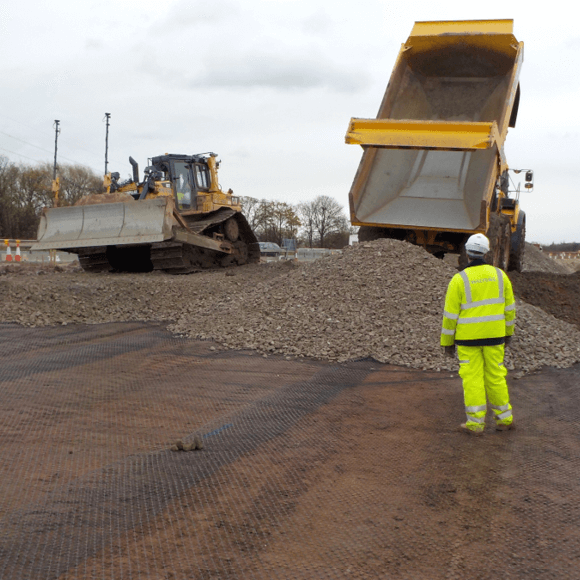
Subgrade Stabilisation Benefits
Subgrade, or ground stabilisation, provides a site with many benefits, including the highly advantageous reduction of costs and embodied carbon from construction by up to 50%. There are many other benefits to using Tensar geogrid ground stabilisation, including:
Reducing layer thickness: capping and sub-base layers can be reduced by up to 50% with no performance loss, saving on materials and excavation.
Increasing life: a mechanically stabilised subgrade layer incorporating a Tensar geogrid for ground stabilisation can extend the service life of unpaved roads by a factor of three or more, reducing long-term maintenance costs by up to 50%
Increasing bearing capacity: the load spreading capability of a mechanically stabilised subgrade layer incorporating Tensar geogrids can increase the bearing capacity of working platforms for heavy-duty plants such as cranes and piling rigs.
Controlling differential settlement: Tensar geogrid soil stabilisation can help even out variable ground support from a foundation soil, over highly variable ground conditions.
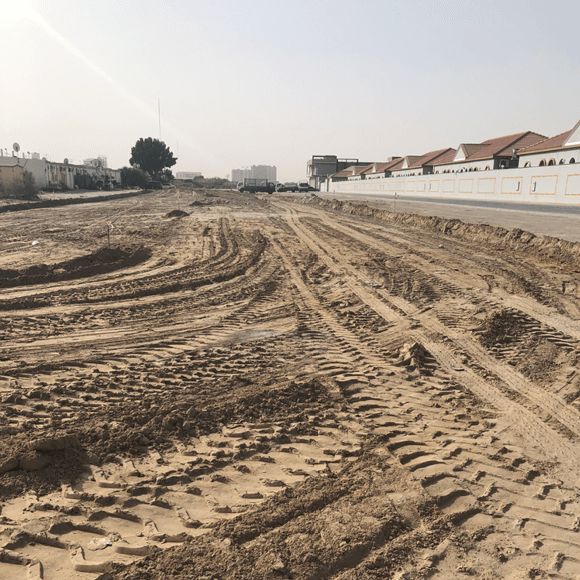
How Tensar Can Help
For more than 30 years, Tensar’s innovative geogrid subgrade stabilisation solutions have proven ideal for many kinds of construction and subgrade improvement projects, including paved and unpaved roads, car parks, airfields, heavy-duty pavements (such as container ports) and working platforms. A full range of case studies and brochures is available below.
Alongside our subgrade stabilisation solutions, we also offer full technical support, including expert advice, specifications, drawings, certified designs and details of pricing, and we regularly run free subgrade stabilisation workshops in many countries throughout the year. Let Tensar help you achieve optimal subgrade and ground stabilisation for your next project.

Tensar+ Geotechnical Design Software
Tensar has developed Tensar+, a free, cloud-based geotechnical design software that allows you to design and plan out your project utilising a variety of geogrid applications. With its dedicated subgrade stabilisation module, you evaluate your design before construction, allowing you to monitor costs and analyse the sustainability of your subgrade and ground stabilisation projects. Based on full-scale trafficking testing backed up by years of on-site experience, Tensars subgrade stabilisation design methods and solutions are widely accepted and utilised worldwide.
_1.jpg?width=580&height=580&ext=.jpg)
The Power of Geogrids
For stabilising aggregate, especially over weak subgrades, stiffer is better. Tensar’s technology and expertise in ground stabilisation not only improve site performance but are proven to reduce costs and environmental impact. Our innovative geogrid solutions provide effective confinement of granular fill, resulting in a stiff mechanically stabilised layer (MSL) capable of controlling differential settlement and increasing bearing capacity.
With Tensar geogrids, you need less aggregate to stabilise your job site – and less aggregate means less cost. They’re fast and easy to install, which means less time lost from your project schedule. And Tensar geogrids are backed by thousands of hours of testing and research, so you can trust the results.




